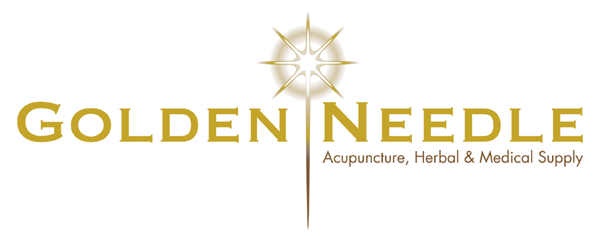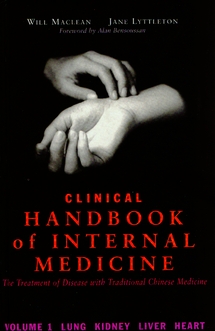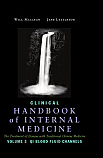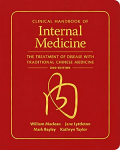One of the signs that signifies the maturation of a profession, is the quality of it's publications. This is indeed the case with the recent publication here in Australia of the text Clinical Handbook of Internal Medicine-The Treatment of Disease with Traditional Chinese Medicine (Volume 1). Written by two experienced clinicians and teachers of Traditional Chinese Medicine (TCM), Will Maclean and Jane Lyttleton, this text represents a move towards the enculturation of the medicine of China by a culture that has, in the authors words, "different perceptions of the world and our relationships, diets, environmental and genetic influences."
The 965 page text reviews 33 disease states that arise from pathologies associated with the zang (organs) of the Lung, Kidney, Liver and Heart. Chinese disease states such as sinusitis and nasal congestion (bi yuan) and impotence (yang wei) among others, are evaluated and analysed as to the pattern differentiation, pathophysiology, clinical features, treatment principles and their treatment by both herbal medicine and acupuncture. What makes this text different from other Chinese texts is the recognition that the authors clinical experience in a western culture has lead them to reflect on their different clinical experiences and has facilitated the development of their own unique perceptions of the differentiation and treatment of disease using the TCM model. The authors' ability to make explicit TCM medical concepts that are often assumed in other texts, allows the reader to be taken to a deeper level and to further develop a more comprehensive understanding of the Traditional Chinese Medicine, both in a theoretical sense as well as on a practical level.
Other features of the text lie in its presentation. Features such as diagrammatic clinical algorithms which depict the decision making process in pattern differentiation make understanding the clinical complexities a less formidable task. The clinical note section where aspects of the authors experience with the condition are recalled is also a unique feature. The textual layout is succinct and easy to read with the use of bulleted points that relay the essential information thus facilitating clinical usage. Herbal prescriptions are listed with dosages and variations and modifications and patent medicines are also suggested where necessary. The authors have also supplemented the main body of the text with a number of clinically useful appendices. These include processing methods for herbs, delivery methods for herbs, as well as listing incompatible, antagonist and toxic herbal substances.
This text has much to offer both the student as well as the experienced clinician. It presents in a handy compact format, as much as a text of this size can be, and has been designed for years of heavy usage.
Chris Zaslawski, Lecturer, College of Traditional Chinese Medicine, University of Technology, Sydney.




